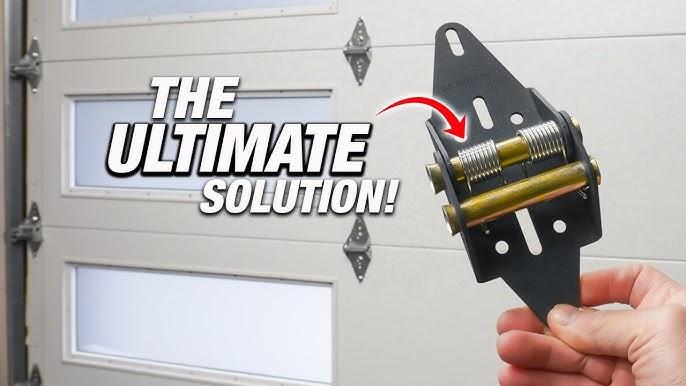Do you hear an unsettling rattling noise every time you open your garage door, leaving you concerned about its safety and reliability? A garage door that rattles when opening can be both annoying and alarming, indicating potential issues that need to be addressed. In this detailed guide, we’ll delve into the reasons behind why your garage door rattles when opening and provide practical solutions to help you rectify the problem and restore smooth operation.

Understanding Why Your Garage Door Rattles When Opening
Before we delve into solutions, it’s crucial to understand the underlying reasons behind why your garage door rattles when opening. Several factors can contribute to this unsettling noise, including:
- Loose Hardware: Over time, the hardware components of your garage door, such as nuts, bolts, and screws, may become loose due to regular use and vibrations. Loose hardware can cause parts of the door to rattle when it is in motion.
- Worn Rollers: The rollers that guide your garage door along the tracks can wear out over time, leading to increased friction and rattling noises when the door is opened or closed.
- Misaligned Tracks: If the tracks that guide your garage door are misaligned, it can cause the door to shake and rattle as it moves along the tracks. Misalignment can occur due to various factors, including wear and tear or improper installation.
- Lack of Lubrication: Proper lubrication is essential for the smooth operation of your garage door. Without adequate lubrication, moving parts can rub against each other, resulting in rattling noises.
Troubleshooting and Fixing a Garage Door That Rattles When Opening
Now that we’ve identified potential causes, let’s explore some troubleshooting steps and solutions to address the issue:
Tighten Loose Hardware
Inspect Hardware: Conduct a thorough inspection of all nuts, bolts, and screws on your garage door and hardware components. Tighten any loose hardware using a wrench or screwdriver to prevent rattling.
Read too: No Power to Genie Garage Door Opener – Resolving the Issue with Ease: Troubleshooting Guide
Replace Worn Rollers
Check Roller Condition: Examine the rollers on your garage door tracks for signs of wear and tear, such as cracks or flat spots. To ensure smooth and quiet operation, replace worn rollers with new ones.
Align Tracks Properly
Check Alignment: Inspect the tracks on both sides of your garage door to ensure they are properly aligned. Use a level to verify that the tracks are straight and parallel to each other. Adjust as necessary to correct any misalignment.
Lubricate Moving Parts
Apply Lubricant: Use a silicone-based lubricant to grease the moving parts of your garage door, including rollers, hinges, and tracks. Lubrication reduces friction between components, minimizing rattling noises and prolonging the life of your garage door.
Conclusion
A garage door that rattles when opening can be a cause for concern, but with the right troubleshooting steps and solutions, you can address the issue effectively. By tightening loose hardware, replacing worn rollers, aligning tracks properly, and lubricating moving parts, you can restore your garage door to smooth and quiet operation.
If you’ve tried the troubleshooting steps outlined above and the rattling persists, it may be indicative of more serious issues with your garage door mechanism. In such cases, it’s advisable to seek assistance from a professional garage door technician who can diagnose and repair any underlying problems.
Remember, regular maintenance and prompt attention to any issues can help ensure the safety, reliability, and longevity of your garage door system for years to come.



Leave a Reply